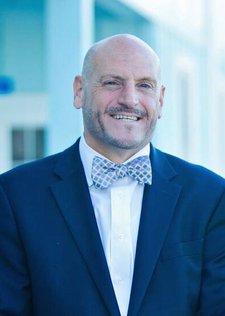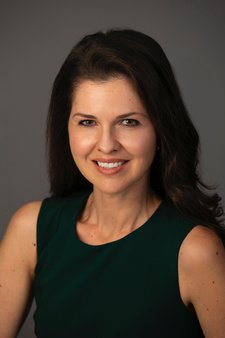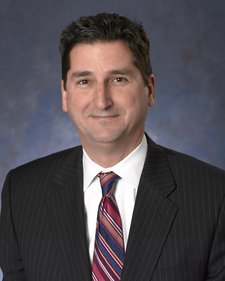
By Rodger Dean Duncan, Contributor
Oct. 28, 2022
Many people resist change because it’s uncomfortable. It may require giving up old habits, abandoning outdated processes, or even letting go of long-held views that once seemed immutable.

In short, change often involves an uneasy step into the unknown.
Sterling Hawkins certainly understands that, and he has a few entrepreneurial battle scars to prove it.
From a multi-billion-dollar startup to collapse and bouncing back to launch, invest in and grow more than 50 companies, he now puts that experience to work with C-level teams at some of the largest organizations in the world.
Despite (because of?) the ups and downs he’s experienced in his own entrepreneurial journey, Hawkins champions the view that it’s exactly because of difficult circumstances that breakthrough results are possible.
He trumpets that perspective in Hunting Discomfort: How to Get Breakthrough Results in Life and Business No Matter What.
Backed by findings from neuroscience and psychology, Hawkins offers tips on how to produce powerful results:
- Expand Your Reality: Take off your life-limiting lens and open your eyes to previously unimagined possibilities.
- Build a Street Gang: Surround yourself with people who hold you to your potential and nothing less.
- Flip It: Take the inevitable problems or roadblocks that come up and use them to your advantage.
- Surrender: Radically accept what is and the inevitability of unpredictability. Regard of how life unfolds, create strength and flexibility to flow, flex, and pivot to the best possible outcomes.
Rodger Dean Duncan: In what ways does discomfort serve as an important source of feedback?
Sterling Hawkins: Discomfort has been a powerful force in human evolution that has kept us alive. The hunger, fear, worry and other discomforts were what forced us to deal with the real necessities of life and ultimately survive. If ancestors ignored discomfort, it was oftentimes at their own peril. It literally was a guide giving them focus and direction of what needed attention.
Modernity has afforded us the luxury of separating from the discomfort / respond and solve paradigm because it’s typically no longer necessary for basic survival.

Sterling Hawkins
Today we can generally ignore discomfort, explain it away, give excuses for it and even medicate it away instead of dealing with the source of it like our ancestors did.
When we return to understanding that the purpose of discomfort is to guide us, keep us safe and to drive our behavior, it becomes a very powerful feedback mechanism for growth. When we acknowledge that discomfort is there to teach us something – it gives us access to learning about ourselves, each other and the world around us. It is not only an important source of feedback, it’s the most important.
Duncan: What do you see as the steps to unleashing the power of the unknown?
Hawkins: The unknown is exactly the location of all new results—for you personally and for all of us collectively. What’s less talked about is the fact that the unknown can be radically uncomfortable. For example, really coming to terms with the fact that the unknown of tomorrow isn’t promised to any of us, at any level, can be massively unnerving.
To step into that potential of the unknown first requires building what I call the “discomfort muscle” to give you the capacity to deal with the unknown. Research out of the University of Michigan found that discomfort, be it physical or emotional, was processed by the brain and body almost identically. Taking the next step, the more we meet discomfort anywhere, it can grow our capacity to deal with it everywhere. In other words, you must practice working with discomfort.
You use that muscle to begin committing to new results, you guessed it, outside your comfort zone and beyond what you already know you’re 100% capable of producing. You will realize the potential of the unknown in working towards closing that gap. If you really want to take it up a notch, find someone who will hold you personally accountable for it. Research shows that with personal accountability, you’re 95% more likely to achieve your goal.
Duncan: How can people recognize—and respect—the line between discomfort and danger?
Hawkins: You’re right that discomfort and danger are oftentimes confused. Just because you feel discomfort doesn’t mean that there’s any real danger… and oftentimes there isn’t (or it’s dramatically less than you feel). Take the common fear of public speaking. It may be terrifying for you, but there’s no real danger.
The only place to reconcile discomfort with danger is in physics and data. There’s enough data around most things today that you can see what the real risks are. For example, the physical risks of skydiving or the monetary risk of launching a new product. Regardless of how you feel about those things, there are tangible numbers that yield the realities of real danger that should be respected.
If you let discomfort alone drive what risks you take, the best place you can end up is with a slightly better version of what you already have.
Duncan: You point out that people can’t change reality, but they can change how they see it. What’s the key to seeing “reality” through a different (and more productive) lens?
Hawkins: That’s right. Our view of reality works very similar to a lens, like lenses in glasses. I wear glasses and it’s very clear when I put them on that my vision improves. If you were to put on my glasses, likely your vision would be worse. Both ways, the lenses change what you see.
Now, I go to regular optometrist appointments where the doctor evaluates my eyes and adjusts the lenses as necessary. Conversely, most people aren’t readily examining their views to see a more accurate and productive version of reality. Yet, that is the key to new results. It’s not just a matter of working harder or longer. It’s a matter of backing up from whatever situation that you’re in and coming to terms with the fact that your view is a view, not the truth.
Duncan: Teamwork can have its advantages, but it can also produce stultifying groupthink. How can team members collaborate to produce the best solutions?
Hawkins: Groupthink can be hard to spot because it requires fundamentally going against how those around you see the world. And even when you do spot it, calling it out in an unhealthy culture could leave you ostracized or rejected from the group.
The best way to fight groupthink is to get clear on all the assumptions you have when looking at a situation (these are typically the “lenses” through which you’re viewing reality). Are some of your assumptions based on data that may have changed? Experiences that may be different for you than they are for others? Information that isn’t verifiably true? You can list them our individually or as a team. Pulling out your assumptions lets you start questioning common groupthink views—in order to break free from them.
Duncan: Feelings can sometime masquerade as facts. How can a person confidently know the difference?
Hawkins: Feelings masquerading as facts is like discomfort masquerading as danger. They’re not the same and they might not even be related in some areas. Facts exist in hard reality—you can point to them, measure them, quantify them… whereas feelings might leave you thinking a certain way without the facts to back it up.
We already talked about using physics as a good measure of finding the difference, but it also helps to have someone close to you that is more committed to your growth than your feelings. They can help you spot when discomfort is in the way, when negative thoughts might be taking over, when limiting beliefs are obscuring your view, so you can use facts to grow beyond them.
Duncan: You cite John F. Kennedy’s audacious announcement about sending men to the moon. In what ways is commitment an antidote to self-doubt and a short-cut to results?
Hawkins: When that announcement was made, NASA wasn’t sure exactly how they were going to send men to the moon. And yet, JFK committed, and very publicly so, because he knew that commitment would drive action beyond self-doubt.
It works the same for all of us when we commit. Committing is a line in the sand to get something done. Committing to yourself won’t do it because you can (and will) change your mind as things get hard. The more public, the more that’s at risk, and the more consequences on the line in your commitment the better. It will call you (and those around you) into action, even when the reasons, excuses and circumstances become too much. You want the discomfort of not achieving to be greater than the discomfort it requires to achieve.
And just like JFK, you don’t need to know exactly how you’re going to achieve something. It takes that commitment to unlock creativity, ingenuity and determination that might be hard to see from where you’re sitting today. And when you think that what you’re working towards it too hard, remember that NASA realized their goal of sending men to the moon using only the computing power of an old desk calculator!
Duncan: What are some of the masks people hide behind in response to their fear of exposure?
Hawkins: If an individual was rejected from their tribe in early humanity, it didn’t mean they didn’t have friends, it literally meant death. So instead of risking exposing ourselves to that rejection, we created personas or masks that could be changed to guarantee acceptance. A practice that continues to this day, even if rejection from a group is no longer a mortal sentence.
There are many masks we hide behind, but one of the most dubious of those masks is the blamer, someone that always has a reason for why something didn’t get done. Blaming might help you preserve your identity within a group, but it prevents you from getting better. Whenever you externalize a problem to someone or something besides yourself, you rob yourself of any power to deal with it.
Another mask that seems to be pervasive in many business cultures is the cynic. Cynicism is a defensive posture that opts to hide hurt or anger by not participating instead of dealing with the discomfort directly. A surefire way to protect yourself from exposure is not to play the game at all. You’ll find cynics fighting for the status quo only because it’s a nice shady place to sit that’s protected from the glare of any possible exposure.
Duncan: You recommend that people have a “street gang” of associates who will being accountability and a higher standard into their lives. How does that work?
Hawkins: I call it a Street Gang and not a close network of friends or personal board of directors for a reason. It needs to be real, it needs to be tough, and the people in the gang need to hold your growth as more important than your feelings. Accountability like that can again leave you 95% more likely to achieve your goal, but it requires a couple of important components.
Most importantly, and maybe obviously, the person holding you accountable must know they’re holding you accountable. Their role must be super clear. Beyond that, there need to be regular checkpoints. Sure, your goal might be a year away, but there are milestones you can report on weekly. And for each checkpoint, there must be a clear deliverable: what exactly you’re promising to accomplish. When you have a person you’re accountable to for a specific thing at a specific time, you can’t help but reach higher standards.
Duncan: What are some of the most common mistakes people make when addressing a challenge?
Hawkins: The mistake I see most out there in the world is that many people attempt to solve the consequence of the challenge, not the challenge itself. An easy example is a dentist prescribing a mouthguard for someone who grinds their teeth, instead of understanding and solving the stress, sleep position or other factors that might be causing the grinding to begin with. If you’re solving consequences, it’s at best a band-aid. But more likely you’re just going to see another consequence pop up.
The other super-common problem-solving mistake I see is people trying to outlearn their challenges. Clearly, sometimes you need to information. But it’s more-often a delay tactic to prevent you from looking bad or feeling uncomfortable. No matter how much you learn about riding a bike, eventually you have to get on the bike and take on the risk of falling off. Learning is a vital part of growth, but not when it delays you from taking new action.
Duncan: The unknown, you say, is where the results are. How so?
Hawkins: There’s little growth in “knowing” something alone. Just because you know diet and exercise is the path to the health you desire, doesn’t mean you’ll do it. Something unknown might be in the way that you must tap into to get to the result. If all it took was a superficial knowing of how to get to your result, the smart money is on that you’d have it already.
It's well researched that our unconscious mind is the primary driver of our behavior. And without venturing into that unconscious, uncertain and unknown in ourselves, we’re left with existing models and approaches. And we already know the results we’ll get with those. The limitless abyss of potential beyond our simple conscious mind contains all the results we can ever dream of. If we’re ever going create a breakthrough result, we’ll need the courage to step into that unknown.
© 2024 Forbes Media LLC. All Rights Reserved
This Forbes article was legally licensed through AdvisorStream.








